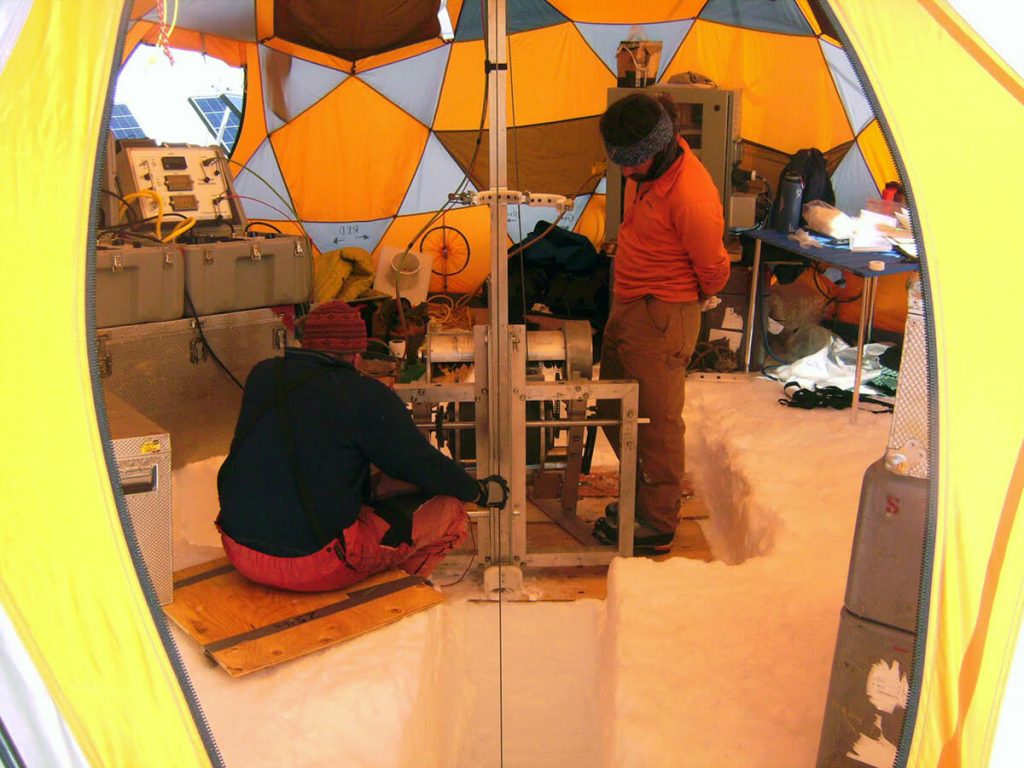
Mountain ice records North Pacific storm intensification through windblown sea salt
For nearly 300 years, winter storm activity in Alaska and Northwestern Canada has been intensifying and is currently unmatched in magnitude and duration over the past 1,200 years, according to a new study published in the journal Geophysical Research Letters.
The research, a collaborative effort between Dartmouth University, the University of Maine and the University of New Hampshire, finds that warming waters in the tropical Pacific Ocean have intensified the Aleutian Low, a pressure system that largely governs storm activity in the North Pacific.
According to the study’s lead author, UMaine graduate Erich Osterberg, now an assistant professor at Dartmouth University, it is more stormy now in Alaska and Northwestern Canada than at any other time in the past 1,200 years. This period of intensification began in 1741 and as tropical Pacific sea-surface temperatures continue to warm — due in part to human activity — the trend is expected to continue.

To identify the long-term intensification of the pressure system the research team, which included UMaine’s Karl Kreutz, professor of Earth and climate science, analyzed the amount of sodium in two ice cores recovered from Mount Hunter in Alaska’s Denali National Park and another from Mount Logan in Canada’s Yukon Territory.
During strong winter storms in the North Pacific, ocean sea salt is blown inland and deposited atop high altitude mountain peaks where it becomes incorporated into the annual accumulations of snow and ice. By measuring the amount of sodium derived from the windblown sea salt in the layers of an ice core, researchers can determine the storminess during a particular point in time. The ice cores used in this study provide a 1,200 year long composite record of storm activity in the North Pacific.
While the Aleutian Low system is located above the eastern Bering Sea, it can impact winter temperature and precipitation patterns throughout North America.
In addition to Kreutz, other UMaine researchers involved with the study include research assistant professors Seth Campbell and Sean Birkel, assistant director of the Stable Isotope Lab, Douglas Introne and ICPMS Laboratory manager Michael Handley.
The research team has yet to complete the analysis of the final 10 meters of Denali ice which could potentially provide thousands more years of paleoclimate data. Given the compression of the layers of ice in the core, a range of advanced sampling technology is required. One example is laser ice sampling at the UMaine W.M. Keck Laser Ice Facility which can analyze samples as small as 10 micrometers.
Contact: Walter Beckwith, 207.581.3729
